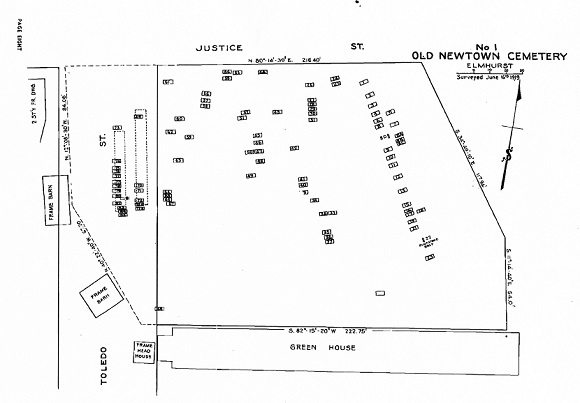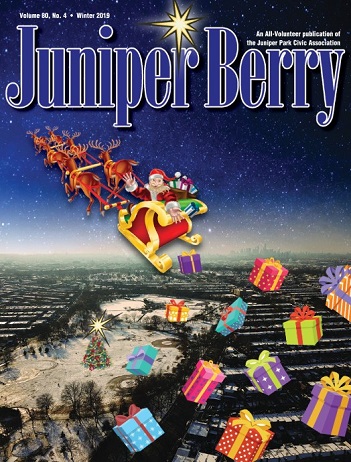Newtown Playground, located at 92nd Street and 56th Avenue, has recently undergone a major design overhaul. This familiar park, across from Newtown field, on the opposite corner of Cathedral Prep High School, was for a long time the site of Old Newtown Cemetery, a burial ground dating from the late 17th century for some of the area’s most well-known and influential settler families, including those of the Moore, Titus, Sackett, Lawrence, Rapelje, Bloom, Coe, and Fish families. After the early settler families found alternate final resting places, the lot itself became underused and neglected, until it became utilized as a pauper cemetery, which included African-Americans, until the last known burial in 1880.
Just prior to the playground’s construction, about 86 remaining stones were flattened and placed well below the surface, while some unclaimed stones became mixed with cement to form a layer above the cemetery. The cemetery harkens back to a time before the northern part of Justice Ave became 56th Ave, when it was known as Court Street, and prior to 92nd Street traversing through, then named Toledo Street. Many of the individuals belonging to the early families once buried here had been associated with the First Presbyterian Church of Newtown, and subsequent burials occurred there, and some re-interred from Old Newtown on their church burial ground, directly across Queens Boulevard from the 1895 church, in a cemetery adjacent to its 1787 church, consumed by fire in 1928, a cemetery which became razed in the late 1950’s; some remains moved to the Evergreen Cemetery in Brooklyn, in addition to private burial grounds. It is believed the cemetery still holds remains of some 86 settlers, but that their condition is somewhat speculative, since the playground underwent a few previous renovations, which included archaeological studies, the last being in 1997.
The park was completed in 1937 and included a brick comfort station (still there), which has boys and girls rest rooms, and included a ‘play’ room, on land acquired by the City of New York in 1898. It was transferred to the Department of Parks in 1917. The original park included swings, slides, seesaws, a sandbox, a wading pool, benches, cherry and hawthorn trees. The latest design at a cost of $1.5 million features more greenery, pathways, plenty of more benches, and a circular mound, making it look to the observer as an effective and worthwhile use of space. However, the issue is not with the park’s aesthetics, but the long overdue recognition of the individuals once buried here, and those that still remain, from families who basically founded and were deeply entrenched in all aspects of the growth of Newtown as a vibrant community.
“The people buried in Old Newtown Cemetery were its first settlers, and many prominent in the development and history of the area. How can we allow them to be forgotten? We need to remember the sacrifices and hard times they lived through. These early settlers built the foundation not only for Elmhurst, but for all of Western Queens. They were the pioneers of our area. This ancient cemetery must be preserved as much as possible, with a detailed marker explaining its significance to a forgetful community; as well as possibly listing names of those buried here,” said Marjorie Melikian, Newtown Historian.
The Elmhurst History and Cemeteries Preservation Society (EHCPS), a 501c3 not-for-profit small group of devoted community members met with Queens Borough President Melinda Katz, representatives of the Parks Dept., and Community Board 4 to discuss and reach an agreement on this issue, back in 2017, the result of which was that ‘signage’ of 144 characters on a plaque would be allotted. Characters are defined as a combination of letters and symbols. With the park now having completed its latest incarnation, and with no signage in sight, the EHCPS is requesting to revisit the initial signage plan of 144 characters, into something much more fitting to honor these souls who resided in the community, and pay a debt to them for working to transform this area of Newtown; once marshy, hilly, and wooded into a thriving farming community, one of business and industry, as well as a center of both justice and spirituality. Certainly, the souls buried as paupers after the site became a Potter’s field should also be acknowledged. How is it that other areas of NYC, even in Queens, get fancy markers, diagrams, and illustrated plaques, yet for this sacred hallowed ground of Newtown, signage is reduced to a meager 144 characters to squeeze onto a small sign? EHCPS members hope for additional signage more befitting this site, paramount to the early history of Newtown, a settlement founded in 1652, second oldest only to Flushing. “For people to understand the history better, we need to have better explanations of what occurred in the past, so as to better appreciate it,” added Michael Harrison, third generation Elmhurst resident.
Newtown Playground has for many years received the moniker ‘Indian Park,’ and many people growing up in the area were led to believe quite erroneously that it once held a Native American Burial ground. The origins of this folklore remain shrouded in mystery. There is no mention in the historical record whatsoever of it having served in that capacity for Native peoples prior to the European’s arrival. What is known and well documented are the settler family members. These families some of whom intermarried figured prominently during colonial times, spurring the rise of an organized society at time when other parts of Queens were still woodlands. They also participated in early government, military, church hierarchy, as well as serving pivotal roles on both sides of the struggle for independence during the revolutionary era.
Another significant find that arose during the park’s recent excavation was the finding of a bone fragment. This discovery was not immediately reported to EHCPS as the group insisted on having an archaeologist present in case materials were uncovered. The EHCPS would like to see an analysis done on this fragment, and hold it for study, to determine its origins and see that it is re-interred in a proper respectful way. In closing, the EHCPS, continues to work with local officials in order to spotlight parts of Elmhurst, and this site cries out for a more expansive acknowledgement for the public to witness when strolling through the park, or stopping to honor the final resting place of the first settlers.
“Its importance is to reclaim the narrative in order to correct or add historical facts that may have been left out. We cannot expect to learn from history if it is not correctly and completely documented, and most importantly, taught,” said Jennifer Ochoa of the EHPCS.




